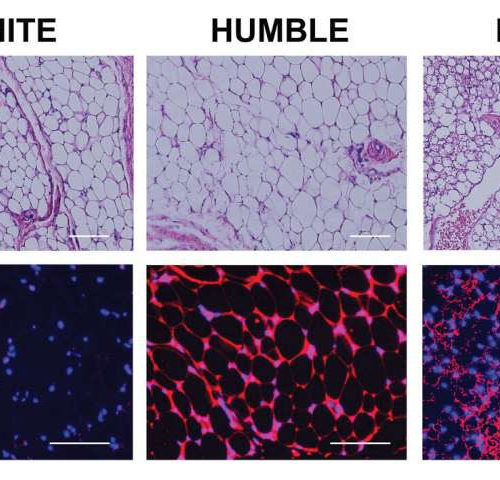by University of California, Los Angeles CRISPR-associated protein Cas9 (white) from Staphylococcus aureus based on Protein Database ID 5AXW. Credit: Thomas Splettstoesser (Wikipedia, CC BY-SA 4.0) For the first time, scientists have used CRISPR technology to insert genes that allow immune cells to focus their attack on cancer cells, potentially leaving normal cells unharmed and increasing...
Tag: <span>Crispr</span>
Researchers advance CRISPR technology to replicate human diseases with unprecedented accuracy
by Walter and Eliza Hall Institute of Medical Research Generation and validation of pdCas9a-SAM construct in Eµ-Myc lymphoma cell lines. a Schematic representation of the pdCas9a-SAM lentiviral construct. b Western blot analysis for BCL-2 in manipulated Eµ-Myc lymphoma cell lines. EMRK-1184 or MRE-721 Eµ-Myc lymphoma-derived cell lines were transduced with pdCas9a-SAM only or pdCas9a-SAM plus Bcl-2...
New CRISPR-based map ties every human gene to its function
by Eva Frederick, Massachusetts Institute of Technology Data for a new gene-function map are available for other scientists to use. “It’s a big resource in the way the human genome is a big resource, in that you can go in and do discovery-based research,” says Professor Jonathan Weissman. Credit: Jen Cook-Chrysos/Whitehead Institute The Human Genome...
Better than CRISPR? Another way to fix gene problems may be safer and more versatile
BY JOCELYN KAISE, 1 JUN 2022 4:30 PM A version of this story appeared in Science, Vol 376, Issue 6597. Tools such as CRISPR that snip DNA to alter its sequence are moving tantalizingly close to the clinic as treatment for some genetic diseases. But away from the limelight, researchers are increasingly excited about an...
CRISPR screening tool identifies new drug target for leukemia
PHILADELPHIA—A CRISPR screening tool identified a new therapeutic target to treat acute myeloid leukemia (AML) that has the potential to leave patients with fewer side effects than current approaches, according to a new study from Penn Medicine published online in Molecular Cell. The target, known as ZMYND8, isn’t a mutated gene, rather an epigenetic regulatory protein that cancer cells need...
Are we ready? Advances in CRISPR means the era of germline gene editing has arrived
by Delthia Ricks , Medical Xpress Credit: CC0 Public Domain Quick, accurate, and easy-to-use, CRISPR-Cas9 has made genomic editing more efficient—but at the same time has made human germline editing much more feasible, erasing many of the ethical barriers erected to prevent scientists from editing the genes of heredity. “The ethical debate about what is...
CRISPR Illustrated
BY ALISA ZAPP MACHALEK You’ve probably heard news stories and other talk about CRISPR. If you’re not a scientist—well, even if you are—it can seem a bit complex. Here’s a brief recap of what it’s all about. In 1987, scientists noticed weird, repeating sequences of DNA in bacteria. In 2002, the abbreviation CRISPR was coined...
Editing the immune response could make gene therapy more effective
ASSOCIATE PROFESSOR OF PATHOLOGY, MEMBER OF THE PITTSBURGH LIVER RESEARCH CENTER AND THE MCGOWAN INSTITUTE FOR REGENERATIVE MEDICINE view more CREDIT: UNIVERSITY OF PITTSBURGH PITTSBURGH, Sept. 3, 2020 – Gene therapy generally relies on viruses, such as adeno-associated virus (AAV), to deliver genes into a cell. In the case of CRISPR-based gene therapies, molecular scissors...
Transplanted brown-fat-like cells hold promise for obesity and diabetes
by Joslin Diabetes Center Microscopic images of the various types of fat tissues developed in mice after transplantation. Top panels show the fat tissue’s general morphology, and the bottom panels are the tissue sections stained with hUCP1 (red color), which is unique for brown fat cells. These images show that while the HUMBLE fat cells...
Deciphering the largest CRISPR system
Interview conducted by Emily Henderson, B.Sc. Professor Guillermo Montoya spoke to News-Medical on his research that involved visualizing the largest and most complex CRISPR system, which could have potential applications in biomedical diagnostics. What provoked your research into CRISPR? My interest in protein-DNA interactions and genome editing started a while ago when I collaborated with...








